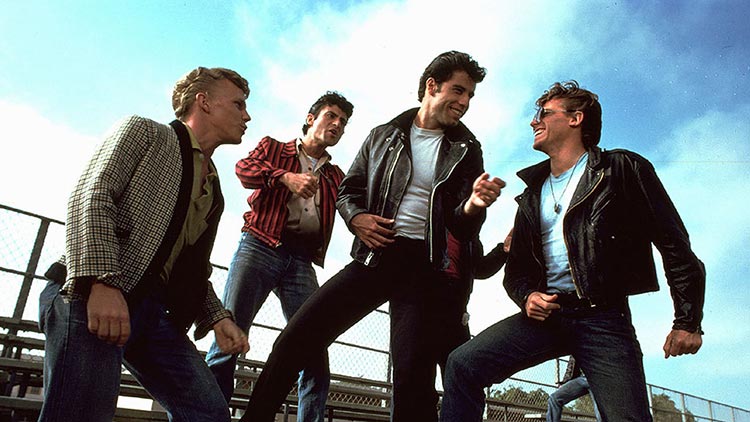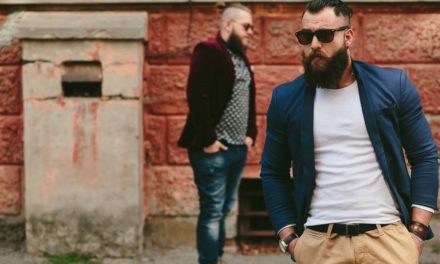Men’s fashion has changed drastically over the years. Trends have come and gone throughout the decades but what are the social and economic factors that drive some of those trends? What could have possibly made David Beckham opt for braids (seriously David!?) and how has the way we dress changed? What do these evolving styles tell us about the world we live in and how they are being shaped by the forces around us?

Source: The Sun
Iqbal V. Gandham, UK Managing Director at eToro has seen first-hand how fashions and cultures have changed in the finance sector to better reflect the cultural and societal trends of our time. As he points out fashion trends tend to come from new ways of thinking and a groundswell of values shared by like-minded individuals, which for pioneers like eToro, means thinking and indeed dressing like the customers we are in business to serve.”Fashion and finance may not be seen as the two most natural bedfellows. Yet as he points out the uniforms men wear tell us a great deal about the world of work and how it has evolved.
eToro is an investment platform, famous for making investing more accessible to ordinary people by doing away with commission fees when buying and selling stocks. It is one of the driving forces of the UK fintech sector, which now encompasses an estimated 1,600 firms with that number projected to double by 2030. Nearly 80,000 people work in the sector and 20 million people in the UK use money management apps of some kind.
It is changing how we invest and adapt to meet the needs of the UK’s young and tech-savvy professionals. In other words, it reflects the needs and wants of its customers. But how have those social forces shaping men’s lapels and waistlines changed over the years?


With 2020 grinding to a halt workplace fashion may be less at the forefront of minds for many men. But lockdown won’t last forever and soon we will be taking off our hoodies and deciding what work attire we should be donning. So how have trends developed and what can we learn from the past?

Iconic Bowler-Hatted Gent In the City Of London
From the iconic bowler-hatted gent in the City of London, to the brash stripes and braces synonymous with the trading floors of the eighties, eToro has tracked the evolution of fashion in finance. The look of today’s fintech entrepreneur is more likely to reflect the aspirational style of their customers than the ‘them and us’ uniform of the old-fashion bank manager.

We are heading into a brand-new decade, join us as we take a look back through history to discover the major milestones of men’s fashion. Men have always needed to be fashionable after all, especially when it comes to living and working in the city.
Fashion disasters aside, here’s how the city man’s style has evolved since the 20th century.
1900 – 1919: Suit up.
The turn of the century saw a worldwide adoption of England’s ‘middle-class men’s suit’. This design replaced the more decadent suit styles of the 1800s and consisted of three main pieces: the jacket, the trousers, and the waistcoat.
Later on, during the 1910 years, simpler suits started to grow in popularity, and the style changed to become a straightforward single-breasted jacket with narrow lapels and high buttons. This was typically worn with a pair of straight trousers and topped off with a boater or gambler hat, alongside a pair of two-tone boots.

Source: Forbes
1920s: America’s influence
Better known as the roaring ‘20s, the Jazz Age saw a newfound optimism reflect in the fashion of the time. The city man’s suit became simpler, slimmer and brighter, with lighter colours replacing the black, charcoal and navy styles of the previous decade. Bow ties, fedoras and Panama straw hats also grew in popularity, and men began using a Windsor knot more regularly.
The decade represented a time of economic growth following the first world war; a time which bared witness to the rise of Hollywood and the true birth of men’s fashion.
1930s: Bigger = better
Back in the 1930s, bigger was most definitely seen as better. Double-breasted suits were all the rage, featuring full-cut trousers and, more often than not, topped off with a bowler hat. Long-tail tuxedos also started to set the standard for how a gentleman should dress, particularly during the evening.
The 1930s was also the decade where shirtless sunbathing became the ‘in’ thing to do, so there soon became much more of a body image-conscious.

Source: Flipboard
1940s: Bleat-free & pleat-free.
War changes everything. Back in the 1940s, the government restricted the use of wool in clothes manufacturers, giving rise to baggy single-breasted jackets and pleat-free trousers. Many men would have had to wear army uniforms by day but, after the war ended in 1945, fashion returned to its former glory. Wide lapels, spread colours and roomy suits all started to become more and more popular again as the textile restrictions were lifted.
Early 1950s: Hats & Hawaii.
When you think about men style icons, James Bond is often one of the first names to spring to mind. Well, his fashion style was very much based on the fashion of the 1950s where conservatism and conformity were seen to reign supreme.
Trim tailoring became popularised and many people were seen with fashionable accessories like hats, pocket squares, cigarettes and martinis – shaken, not stirred of course.
A little bit of flair also started to creep in, with shantung jackets, madras prints and Hawaiian shirts becoming seen more and more regularly worn during men’s downtime.

Late 1950s: Go, grease lightnin’.
For teenagers and young adults, the 1950’s were fairly boring. The overall sense of calm following the war’s conclusion wasn’t particularly stimulating and, as such, the greaser subculture was born.
The greaser fashion trend consisted of fitted white and black t-shirts, baseball shirts, rolled-up denim, leather jackets, bomber jackets and letterman jackets, and was popularised by celebrities like Elvis Presley, Marlon Brando and James Dean. It was also a time where hair was often seen greased back and, if you weren’t in a motorcycle gang, you really stood out.
Early 1960s: Fashion flares up.
The early ‘60s saw formality start to go out the window, replaced instead by skinny and flared trousers, flower shirts, wide lapels, and trends that were – let’s say – a little more ‘out there’.
Many argue that the 1960’s saw men’s and women’s trends shift; women’s fashion started to become more masculine, while men’s fashion took more of a feminine turn.
Jewelry Trends
During this decade, men started to grow their hair long and wear brighter colours than usual. Thin silk scarves, paisley prints, velvet pants and men’s jewelry all started to feature a lot more than they ever had, and coloured glasses became all the rage.
1970s: Big, bright & bold
The rise of brighter fashion didn’t stop in the ‘70s – if anything, it became even more eccentric. This decade was a particular anomaly in the evolution of men’s fashion, with styles that would have been laughed at ten years prior to becoming the norm.
Thanks to the increased ease of travel and shipping at the time, and the declining cost of synthetic materials, the ‘wash and wear’ fashion trend was born, featuring bolder, groovier patterns than had previously been seen. I’m talking shearling jackets, platform shoes, bell-bottoms, leisure suits, and chunky sweaters, to name but a few.

Source: Financial Times
1980s: Slacks & streetwear
The 1980s (thankfully) saw a decline in some of the more outlandish styles and trends. Activewear started to become more and more popular, with sweatshirts, sweatpants and athletic shoes becoming the ‘in’ thing to wear.
In the city, men’s suits were surprisingly conservative, featuring neutrally coloured suits paired with skinny ties. Other popular menswear included slouchy trousers, bomber jackets, polo shirts and –Steve Jobs’ favourite – turtlenecks.
1990s: A minimal time
The 1990’s was a fairly defining decade, with men more-or-less banishing any and all trends from the ‘60s, ‘70s and ‘80s to try and reinvent their image. As a result, minimalism became the hot new trend.
Grunge, rave and hip hop also hugely influenced the fashion choices men made. While the ‘70s and ‘80s had previously been all about extravagance and glamour, the ‘90s was a period of casual, relaxed clothing. Popular clothes choices included knit sweaters, graphic T-shirts, baggy denim jeans and – who can forget – saggy boxer-baring pants. Ahh, the good old days.
2000s: Fast futuristic fashion
Thanks to globalisation, the cost of clothes manufacturer became a lot cheaper, meaning men could have runway looks for low, low prices. Designer clothes became the norm and, at the turn of the millennium, a brief futuristic wave took over. Black, silver and metallic were the ‘in’ colours, and tracksuits became a ‘cool thing’ to wear.
Thankfully, the mid-2000s changed all that, and clothing became a lot less eccentric. Distressed denim became more popular, suits became slimmer and the smart-casual look – chinos, cardigans, pullovers – was seen fairly regularly. There was also an increased focus on accessories during this decade, with footwear and sunglasses becoming increasingly prevalent amongst society.
2010s: The roaring ‘20s returns
Ten years too early but, during the early teenies, the roaring ‘20s made a grand reappearance. As a result, smart casual looks, athleisure and hipster fashions all started to become more and more trendy.
Many men started growing out their beards and began investing in fedoras and non-prescription glasses. They also started wearing way more charity and rave bracelets than they should have done – one or two was definitely enough.

Present: Hello hipsters.
In today’s day and age, men’s fashion is all about skinny, slim-fitting outfits. From denim jeans to designer suits, form-fitting clothing is now more popular than ever before. Plus, thanks to the rise of the internet and online shopping, there is much more variety and choice than there ever used to be.
Light-wash denim, sling bags, vintage watches, corduroy, cropped trousers, and neck scarves are some of the popular trends of recent times, with the world fast becoming much more accepting of people’s individuality. Nowadays, rather than there being one set trend, each individual person can express themselves however they want.
Future: Tech Does The Talking
Thanks to the continuous evolution of technology, men’s fashion look set to change over the not-so-distant future. While it’s unlikely we’ll all start dressing like people from The Hunger Games any time soon, many leading fashion brands are starting to utilise scientific advances in their clothing.
Brand innovators and pioneers like eToro bring 2020 looks that convey a message of respectable, travel-friendly, and fashionable, but not aggressively so.
Regarding Informal elegance
The classic wool trouser, worn in all its pleated correctness, is re-imagined with a drawstring waistband for ease and comfort. Knitwear is trim and practical with the old ‘City stripe’ shirt serving as a pop of colour.


The Blazer Is The New Suit
The blazer is the new suit, and soft, unstructured styles rule. The sneaker, once only worn in inclement conditions, is the go-to footwear for day-long comfort. The look is well put-together and considered as well as being disruptive and mildly subversive. It is the antithesis of the badly fitted blue suit and cheap shoes. Less formal but more elegant. A sartorial dichotomy.

Nano-technology, for example, is being developed to make textile products more attractive, strong and responsive to consumer choice, while smartwatches and fitness trackers all look set to grow in popularity too. Fibre-based nanogenerators are even being looked into as well, designed to allow people to generate their own electrical current as they walk around town. Isn’t technology amazing?















